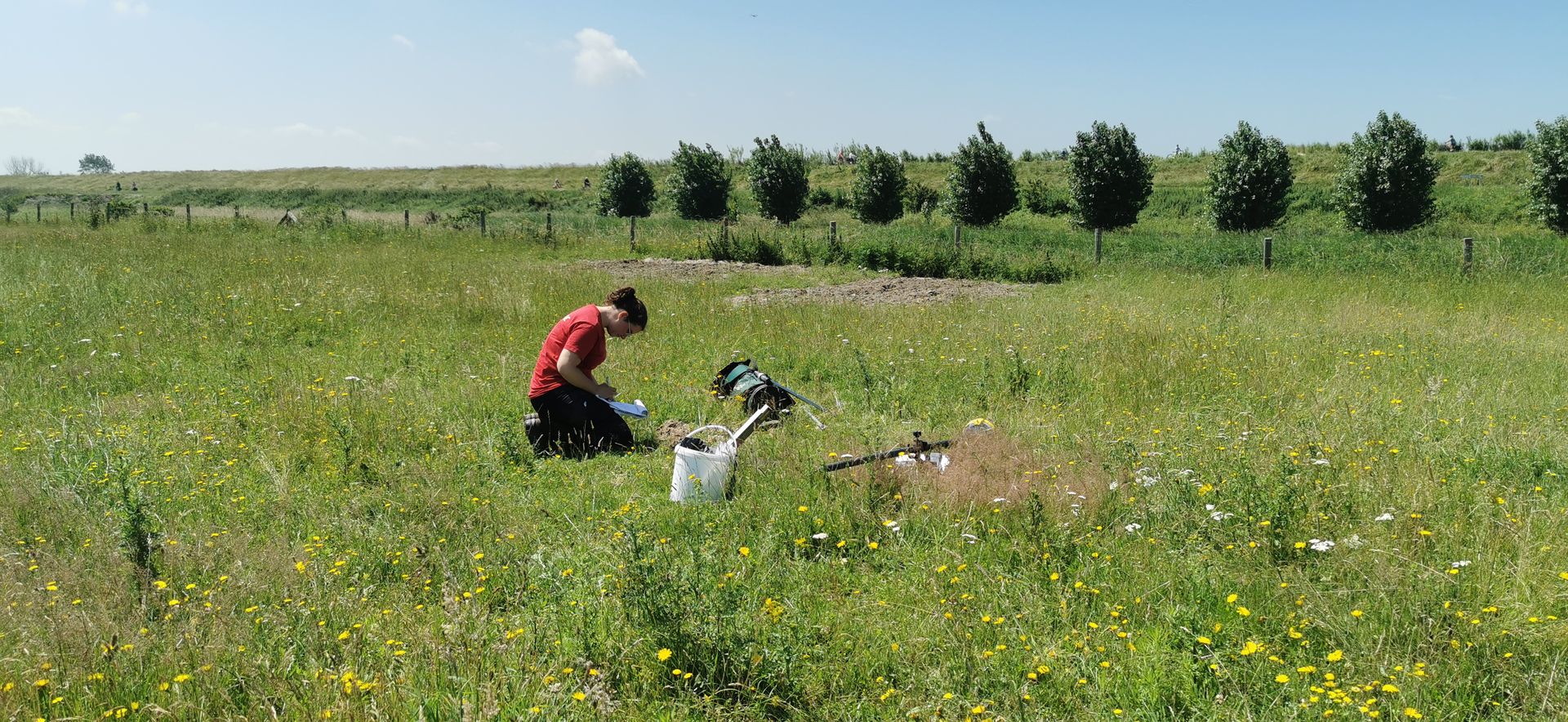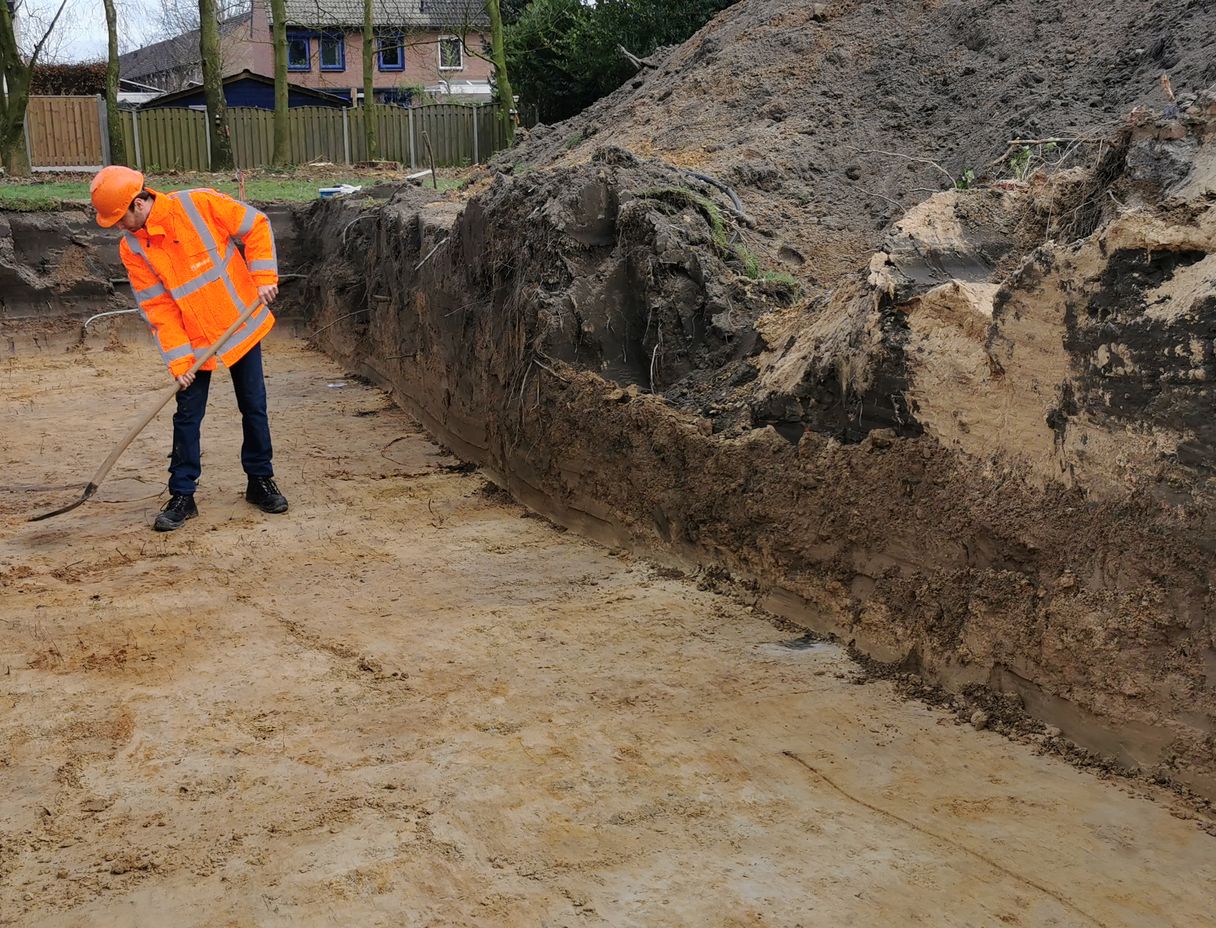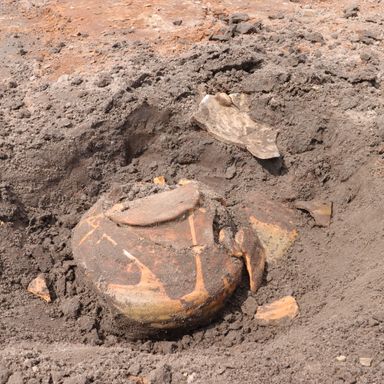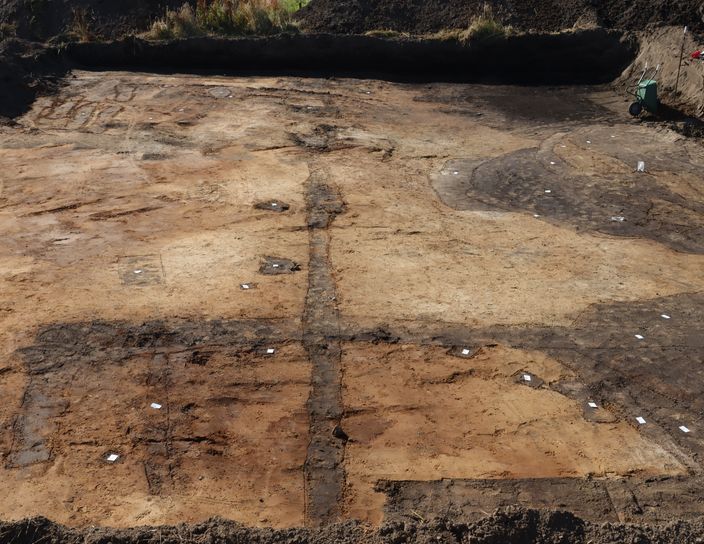

Drilling research
A drilling survey is one of the forms of other inventory field research (IVO-O). This research is used during an exploratory phase, or a mapping phase.
During exploratory drilling, the aim is to test the specified archaeological expectation from the desk research in the field. In this exploratory phase, an attempt is made to gain insight into the soil structure and any soil disturbances. If the soil is (largely) intact and archaeological remains may be present (based on location choice models), it is recommended to carry out a mapping drilling survey. If it is already known that archaeological sites are present, it is also possible to immediately carry out an appreciative study in the form of a test trench study.
During the mapping phase, the plan area is systematically examined for the presence of flint (pottery, bone, charcoal, etc.). Usually by means of a drilling grid based on the specific archaeological expectation. The aim of this phase is to locate sites and to delineate them spatially (as far as possible).
For small surveys it may be wise to combine the exploratory and the mapping phase to save costs. In the case of larger surveys, it may be wise to separate the two phases by means of an evaluation moment, as a result of which parts of the plan area may be excluded from a mapping survey.
The research leads to a selection recommendation that can be converted into a selection decision by the competent authority. A follow-up investigation may mean that an appreciative investigation is carried out.
Trial trenches investigation
The appreciative phase of an inventory field study is almost always a trial trench study. Work pits are systematically dug at the location where a find is expected. Approximately 10% of the plan area will be examined in this study.
By means of this investigation, the size of the site must be determined, as well as the nature of the site, its integrity and conservation. An assessment protocol is used to determine whether the site is worth preserving or not. A selection advice is drawn up in the report, which will be used by the competent authority to make a selection decision. This can lead to plan adjustment so that the site worth preserving is no longer under threat (in situ conservation) or excavating the site (ex situ conservation) when plan adjustment or integration is not an option.
Dig up
When an archaeological site is valued as worth preserving, efforts must be made to preserve it. This can be done, for example, by adapting the spatial plans to the site or by building archaeology-friendly. If the site cannot be preserved in situ, it must be excavated (preservation ex situ). All data is documented, so that the information contained in a site is preserved for future scientific research.
The excavation itself is only part of the investigation. At the end of the fieldwork, all data will be analyzed and elaborated in a report. When the results of the investigation have been worked out, the approved report, all (preserved) find material and all documentation are transferred to the relevant (municipal or provincial) depot for archaeological finds.
By depositing all research data, availability for future scientific research is guaranteed. The elaboration and deposit of the research data are an obligatory part of the excavation.



Need advice?
Contact person: Marc van Oers
Address: Het Zuiderkruis 37
5215 MV, 's-Hertogenbosch
Telephone: +31623668078
Email: m.vanoers@bodac.nl
Please note! We have new telephone numbers as of July 19. Check our contact page.
- Nederlands
- English
- Deutsch
- Francais